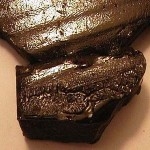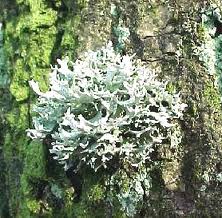When Tom Ford announced the release of his Signature Collection of perfumes in the fall of 2011, his first creation seemed to complement his new make-up line. It was Violet Blonde, a fragrance that ostensibly celebrated the delicate world of the flower that it was named after. Even the print ads seemed to support that point. Appearances can be deceiving.

Lara Stone photographed by Mert & Marcus. Source: Styleitup.com
According to the Tom Ford press release quoted by Nordstrom, Violet Blonde is an eau de parfum meant to represent “a new era of feminine glamour.” The description goes on to read:
Tom Ford Violet Blonde is an opulent fragrance that reveals a stunning new facet of violet: ravishing, intriguing elegance. Made with some of the most precious ingredients in the world, it is crafted according to the finest traditions of European perfumery.
Top notes: violet leaf absolute, Italian mandarin and baie rose.
Middle Notes: Tuscan orris [iris] absolute, Tuscan orris butter and jasmin sambac sampaquita.
Bottom Notes: benzoin, cedarwood, vetiver absolute, silkolide and soft suede.
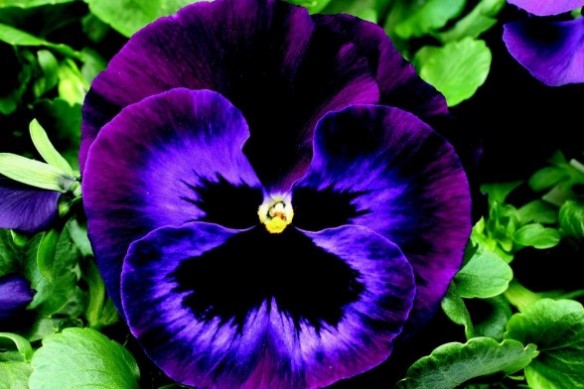
Photo: gardenersblog.jerseyplantsdirect.com
Violet Blonde opens on my skin with a potent burst of green, crunchy, leafy, and peppery notes. You can almost feel the fuzzy, soft leaves of a bunch of violets or pansies, except they are covered with pepper. The scent of the actual violets themselves, however, feels hidden and muffled, as though they were shielded behind the leafy green notes. On my skin, they are a whisper of a suggestion at best, feeling dewy and faintly earthy. The violets and their powerful green leaves are all nestled at the base of a dry tree, though the note doesn’t feel very much like cedar to me but more akin to an abstract woodiness. Seconds later, sweetness seeps through like a creeping puddle approaching the flowers, covering them with a delicate, thin syrup. It’s not ridiculously sweet or gourmand; it’s more like clear corn syrup than heavy, gooey honey.

Pink peppercorns. Source: spicestationsilverlake.com
The purple, green, and brown canvas is quickly splattered with splotches of pink from the pink peppercorns, and with cream from a slightly sharp musk. It’s not the clean or white variety, but it has the subtlest touch of freshness about it, serving to lift up the other notes to make them seem lighter than they actually are. As regular readers know, I’m not at all a fan of synthetic musks, and my nose is very sensitive to their strength, so I’m not a fan of this part of Violet Blonde. Thankfully, the note is relatively minor at this point, though that ends up changing later.
Deep in the base, there lurks an extremely subtle vein of fruitiness. It is indistinct and abstract, but it certainly doesn’t smell like mandarin to me. What’s interesting is how the combination of the pink pepper berries and the musk have created the feel of a general pink fruitiness that is lightly spiced. There is a subtle jamminess to the fruit, too, almost as if purple, fruited patchouli had been used.
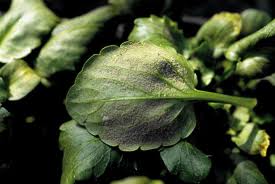
Violet Leaf via gaertner-und-florist.at
All those notes lurk behind the peppery green leaves which are the dominant focus of the scent in the early minutes. The violet flower itself is very elusive, and it becomes even more so 8 minutes into the perfume’s development when the jasmine arrives. It is syrupy, sweet, and very heady. I love big white flowers, so I’m rather thrilled by all this, but the strength of the jasmine basically dooms the violet from every having a chance at a solo act on center stage. In fact, the violet slinks off to the sidelines with a whimper and basically sits out much of the rest of the fragrance like some sort of very embarrassed wallflower. It’s rather disappointing, but perhaps it’s a function of skin chemistry.
Trailing behind the jasmine is the first suggestion of something powdered. Orris is often used in makeup as a fixative and has a powdered aroma, as does iris. Here, there is the tiniest whisper of a rose-iris makeup powder undertone, though it is extremely subtle. Honestly, almost every note in this perfume is subtle and muted on my skin except for the crunchy, peppered leaves in the beginning, and then the jasmine and the musk.
Violet Blonde is quite potent in its opening moments. I used 3 decent sprays from a tiny atomizer, an amount which equals 2 small squirts from an actual bottle. Violet Blonde wafts about me in a billowy, potent cloud that feels as light as a feather, though it is extremely strong in smell. The airy weight of the fragrance is definitely misleading. Violet Blonde’s projection is initially good, wafting about 4 inches above the skin, though that starts to change extremely quickly. As you will see, the opening forcefulness is not characteristic of the scent as a whole.

Source: Hdwallpaperes.com
The jasmine soon becomes Violet Blonde’s driving force. Within 20 minutes, its sweetness cuts through a good portion of the perfume’s greenness. Oddly, I can smell more of the actual violet flower now — as opposed to its leaves — than I did at the start, though it keeps playing a peekaboo game with me from the sidelines. On a scale of 1 to 10 with 10 being the strongest, I would put the violet note at a 3.5 now, perhaps a 4 for a brief moment. It had begun as a 1.5, so it is an improvement, but it’s all very relative. At the same time, the powder and cedar elements also grow stronger. As a whole, Violet Blonde smells of sweet florals dominated by jasmine and thoroughly infused with leafy, peppered, violet leaves. The main bouquet is lightly flecked by powder, cedar, the violet flower itself, pink peppered berries, and a touch of fresh musk.

Jasmine Rouge.
Violet Blonde feels like a juxtaposition of contrasts: heavy but light; headily floral but crisply fresh; sweetly dewy but peppered green; a touch earthy but also a touch powdered; understated and, yet, bold as well. It has that signature Tom Ford opulence, but it is ratcheted down from the levels of many of his Private Blend fragrances. Violet Blonde is not demure, but it is also not particularly flashy or va-va-voom either. Those last two words are what I’d use to describe Violet Blonde’s sibling in the Signature Collection line, Jasmine Rouge, which was released shortly afterwards and which is spectacularly heady in its intensity and punch. Violet Blonde is not. Yet, it feels much less subdued than Tom Ford’s recently discontinued Private Blend Black Violet. On my skin, the latter was quite anemic, muted, and quiet indeed. It also had extremely disappointing projection that didn’t feel like a Tom Ford fragrance at all, never mind one of his Private Blend ones.
Violet Blonde seems to fall midway on the Tom Ford spectrum of power, heaviness, and projection, especially after 40 minutes when it turns much softer. The sillage slowly drops to about 1-2 inches above the skin. The perfume’s weight feels as though it has been cut by 30%, perhaps because the jasmine has now blended into the overall fragrance and has lost a lot of its syrupy sweetness. The powder notes are now much stronger, too.
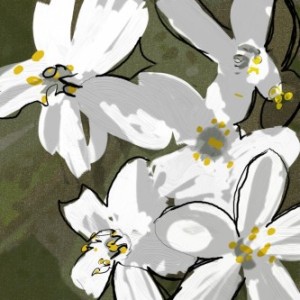
Sketch: Walter Logeman at ThousandSketches.com
At the end of the first hour, Violet Blonde turns more abstract, and the notes all blur into each other. The sillage drops even further. The overall bouquet is of a woody, slightly powdered jasmine with musk. It is only lightly flecked by green, leafy, peppered notes, and they grow increasingly weak. The powder isn’t enormous; we’re not talking Guerlainade levels by any means. It feels more like a light dusting over the jasmine than a strong, core element. One thing is for certain, the iris is not showing its strong, cold, carroty, or dank facets at all. As for the rose, it’s really a no-show on my skin, though there is sometimes a suggestion of it lurking about the powder. I suspect that is merely my mind making a mental association with the sort of powdery rose smell that some makeup or lipsticks can have.
Violet Blonde is very pretty, but I’m really not keen on the growing forcefulness of the musk which pushes aside the green leafiness, the powder, and everything else it sees. Everything but the jasmine. The musk smells sharp to my nose, and is definitely synthetic. Thankfully, it’s not the fresh, white, laundry, “clean” type, or I’d go out of my mind. Still, it grows stronger and stronger as time passes. All too soon, Violet Blonde devolves to a simple jasmine musk on my skin with some abstract woody notes.
Violet Blonde is a very linear scent whose core essence doesn’t change during the rest of its evolution. All that happens is that the jasmine and musk fluctuate in terms of their strength. At times, Violet Blonde feels as though it has turned wholly abstract, and the notes (other than that musk) have lost all individual shape or identity. To be precise, it starts to smell like nothing more than a generic “floral, woody musk” on my skin. At other times, however, the jasmine appears as a distinct element, before it sinks back down into the general cloud. At the start of the 2nd hour, Violet Blonde’s sillage hovers just an inch above the skin. 60 minutes later, the perfume turns into a complete skin scent. It’s quite a surprise to have a Tom Ford fragrance turn so discreet after 120 minutes.

Catherine Jeltes Painting, “Modern Brown Abstract Painting WinterScape.” Etsy Store, GalleryZooArt, linked within. (Click on photo.)
For hours, Violet Blonde continues its trajectory as a simple, sweet, powdered jasmine scent with abstract woodiness and sharp musk. By the end of the 5th hour, there are a two small changes in the base. First, a creamy undertone appears which is lovely. It’s like sweetened woods with a distinct vanillic edge. The latter clearly stems from the benzoin listed in the notes. Second, there is a subtle vein of jammy sweetness that reappears deep down. I can’t pinpoint the source, but, again, it almost feels like a touch of fruit-chouli or purple patchouli. As a whole, Violet Blonde is now an abstract floral scent on a base of creamy woods that are lightly flecked by a vanillic benzoin and strongly infused with fresh musk. The jasmine is just barely distinguishable; all the rest of the notes have faded away or turned wholly indistinct.
The musk starts to finally mellow out and pipe down by the middle of the 7th hour. To my surprise, the violet flower makes a brief, 30-minute reappearance on the sidelines. I guess it was waiting for the musk to shut up in order to make a visit, but it’s still a very shy, quiet, and muted affair. As a whole, Violet Blonde remains on its simple course: a sweet floral musk with creamy woods. The powder fades away by the middle of the 9th hour, as does a lot of the musk, leaving only creamy floral sweetness as the perfume’s dominant characteristic. Violet Blonde remains that way until the end when it dies in a blur of something vaguely floral. All in all, it lasted just over 11.25 hours with very soft, discreet sillage after the end of the 2nd hour.

Photo: Temptalia, with grateful thanks.
Violet Blonde has generally received very good reviews. I’ll start with my friend, Temptalia, who isn’t even particularly into floral scents but who found Violet Blonde to be “elegant, polished, and subtly feminine–ultimately, a sophisticated, layered scent that’s not as heavy or as daunting as Tom Ford’s Private Blend Collection, but in some ways, more refined.” Her review reads, in part:
It opened with strong burst of floral notes with a sweetened, fruit-laced edge over a backdrop of peppery greens. There was an inkling of the greenness from the violet leaf when it opened, but it quickly transitioned to fragrant, floral jasmine, which was the prevailing note on my skin for some time. The jasmine blended with the rooty qualities of the orris (iris root), so it was cool and just softer than crisp; like the first few days of fall, where the air coolly caresses and you realize the seasons have just changed.
I appreciated the damp, mustiness the orris notes imparted–they enhanced the depth and added another layer of nuance. It made it distinctly autumnal for me [….] It’s fresh and green and lovely.
Violet Blonde encapsulates some of those qualities–the freshness and green crispness of autumn–but it is more floral than anything else. It never turned achingly sweet, which is a direction that tends to remind me of youthfulness, and instead, it evolved to an earthy jasmine with soft, creamy woods that took away some of the edginess of the opening of the scent but made it more wearable.
We had an extremely similar experience, right down to the lovely creamy touch that arrives in Violet Blonde’s drydown. I agree fully with her sentiment that Violet Blonde feels elegant, while not being as heavy or intense as many of the Private Blend line. Where we differ is in the feeling of autumn, as I felt Violet Blonde felt more like Spring, but that’s all an emotional, subjective response. (Plus, I’m writing this at the arrival of Spring, so I’m definitely being influenced by that factor. The perfume was released in Autumn 2011, so that might have played a role in the early reviews.)
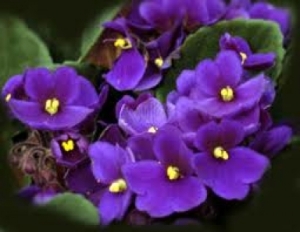
Source: shamshyan.com
Autumn was also on the mind of Bois de Jasmin who gave Violet Blonde a positive review as well:
Although the perfume is called Violet Blonde, the violet in this composition figures more as a green, crunchy leaf, rather than the raspberry redolent flower. As the fragrance settles into the skin, there is a flash of soft, tender violet petals. The delicate sweetness is a very appealing counterpoint to the peppery-green layers that follow. Soon, a strong jasmine note gives its rich hue to the floral and green notes. The cool iris lends Violet Blonde its austere, earthy quality, and when contrasted with the plush jasmine, the effect is memorable and surprising.
The wet, green woody notes underpin the radiant floral core of Violet Blonde, giving it an autumnal feeling of chrysanthemum petals clinging to damp earth. While the leafy and peppery sparkle persists throughout the perfume’s development, there is a musky softness to the drydown that makes Violet Blonde less edgy than it might have appeared initially. It is both a plus and a minus, because while the softness makes the fragrance more wearable, it also reduces its character. Like Balenciaga Paris, Violet Blonde feels too timid to truly make a statement. On the other hand, even if it does not strike me as a bombshell perfume, Violet Blonde is a well-crafted composition. Elegant and polished, it would make a great daytime perfume, a comfortable silk slip of a fragrance.
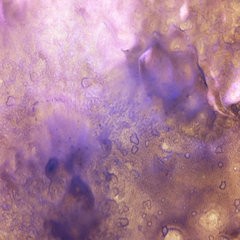
Source: swirlydoos.com
For Now Smell This, Violet Blonde was “polished chic,” and their review reads, in part, as follows:
Violet Blonde is soft and cushy-powdery, as is the current fashion, but it’s loudly so, in keeping with Tom Ford’s aesthetic. […] The opening is a heady mix of citrus, sweet fruit, violet leaf and violet (violet fans take note: it does smell like violet in the early stages). It’s green early on, and peppery throughout. The fruit notes soften as the top notes dissipate, and the violet fades into a jasmine-heavy floral mixed with a dry, peppery iris. The jasmine is clean, with fruity undertones, and it’s strong rather than rich: the ad copy repeatedly uses the word opulence, but it’s a decidedly modern sort of opulence. The base is pale earthy woods, smooth and creamy, and mostly clean — as was the case with White Patchouli, the earthy notes are there, but they’ve been worked over with a fine-toothed comb; there’s no must or skank whatsoever. […][¶]
Violet Blonde in particular has that same feel of “polished chic” that verges on formal (formal, polished and chic also feature in the ad copy). I likened Black Orchid to a ball gown, and White Patchouli to the upscale New York all-in-black look (trousers, a black turtleneck and boots, big sunglasses, sleek hair, one big piece of jewelry). Violet Blonde, the purple-tinged advertising notwithstanding, I’d put in shades of beige and tan, something rather like the perfectly tailored ladies-who-lunch [wear.][…]

Source: Fabfitfun.com
I very much agree with her sentiment of a polished chic that is rather in-between things. It relates back to my point on how Violet Blonde feels as though it is midway on the spectrum between something like Jasmine Rouge (or the bold Private Blends), and the more understated fragrances in the line. For whatever reason, the image which repeatedly came to my mind was that of Sharon Stone from the Oscars long ago in 1998, when she made news by pairing her husband’s simple, white, crisp GAP shirt with an opulent Vera Wang ball gown in violet.
Lest all this sound like Violet Blonde is filled with nothing but fabulousness, let me make clear that the perfume isn’t for everyone. Obviously, you must like both jasmine and powder, and you should not expect a ton of the actual violet flower. Some people seem to struggle with the peppered, green leaves, as witnessed by a few comments on Fragrantica, while others have problems with other aspects of the scent, including its weak sillage. Some of the negative reviews:
- The first hour is a torture for me – can’t put up with e cold top notes? However, it becomes more and more unique as it warms up on the skin and blends into the chemistry of the skin. a dry down seems to me very similar to Chanel Allure.. Overall, very interesting and intriguing fragrance. Love it on someone else, rather than on me.
- Its nice enough but I am slightly disappointed by this ‘mousy’ perfume – I expected Violet Blonde to smell sharp, fresh and more blueish… But its very subtle – it opens with diffuse powder and hints of muted violet. The dry down on my skin is very sweet and musky – like condensed milk. Its much better on clothing – then the violet is more detectable and it has a nice smoky quality.
- I really really like this perfume but it is so weak… It wears like an eau de cologne on me, I must be anosmic to a fragrance for the first time in my life? [¶] Contrary to several reviewers here I adore the sharp opening. It’s a sexy car screeching to a halt, a dyed, blonde wearing something inappropriate opening the door mid-breaking. It’s awesome and exciting. [¶] After the promising beginning it stays and pleasantly tingles my senses for about 2 hours with suede and iris and a few aldehydic background notes but unfortunately fizzles out shortly after. The bodylicious Blonde becomes a shrinking violet….
- Bananas, honey, spices, old makeup…the opening on this scent is so awful that I can’t even justify the drydown.
- My nose does not translate this opening well at all. It just smells like nondescript perfume to me. Nothing stands out for a solid 15 minutes, it is just kind of a mish-mosh of different notes that do not really compliment or play upon each other. They all seem to be competing for first place and nothing is really winning. But if a winner must be chosen I guess it would be the pink pepper. [¶] It finally settles into a soft powdery violet/iris/jasmine that smells nice and rather polite and feminine. But it is nothing exciting or distinct. It just kinda smells like “perfume”.
- 1972 beauty parlor top note. [¶] As an obsessed gardener, I cannot pick out a violet note at any point and the overall feeling is perfectly fine for downtown big city USA. And it’s not that I despise it, really, if I worked in an urban sophisticated environment and wanted to project the image of a confidant, don’t-mess-with-me woman, this would be perfect. As it is, it’s too mature for me at age fifty.
For every one of those negative reviews (or, in some cases, quasi-negative, mixed reviews), I can show you two more positive ones from other people on Fragrantica. Even the ones that start negatively soon turn positive. Then, there are the many who write long, gushing, rave reviews, calling Violet Blonde “classy,” or a “masterpiece.” My gut feeling about the negative reactions is that the peppered, powdered leafy notes are a stumbling block for some people, coming across as either harsh, too strong, or “beauty parlor”-like, before the jasmine’s sweetness cuts through it.
I’m also going to add that the musk (yes, that bloody musk!) creates a foundational element that feels similar to so many other fragrances out there, especially in conjunction to the creamy woods. I think that would explain the handful of comments comparing Violet Blonde’s drydown with Chanel‘s Allure. Honestly, when you’re getting into the “floral, woody musk” genre, when the florals turn abstract and indistinct, but sit upon a creamy wood base infused with that musk… well, they all end up smelling somewhat similar and generic. It’s not a positive thing in my eyes, and is one of the main reasons why I have such problems with the over-use of the musk in commercial scents.
I may not be as keen for Violet Blonde as some people out there, but I did thoroughly enjoy parts of it. While it doesn’t fit my tastes, I think people who enjoy very feminine, soft, powdered florals may want to give Violet Blonde a sniff. Those of you who love jasmine, in particular, may want to seek it out at one of the many department stores which carries the fragrance. Violet Blonde is a generally elegant, uncomplicated, feminine fragrance which is very well-priced for Tom Ford. It feels as refined as his Private Blend line, but for half the price, particularly as you can find it highly discounted at such places as Amazon or FragranceNet. As you can see in the Details section below, a 1.7 oz/50 ml bottle retails for around $110 but can be found for as low as $67. In contrast, Tom Ford’s Private Blend fragrances in that same size retail for $210, and usually can’t be found discounted at all.
All in all, it’s a pretty scent that should suit some people very well.
DETAILS:
Cost & Availability: Violet Blonde is an eau de parfum which generally comes 3 sizes: 1 oz/30 ml, 1.7 oz/50 ml, and 3.4 oz/100 ml. In the U.S.: you can find Violet Blonde at Sephora where it costs $72, $110, or $155, depending on size. Violet Blonde is also sold at Nordstrom in the larger $110 and $155 bottles. Other regular retailers include Saks, Neiman Marcus, Macy’s, Barneys, and Bergdorf Goodman. Discount Prices: Amazon discounts the $110 bottle for around $67 and it is supposedly sold by “Tom Ford.” Amazon also sells the tiny 1 oz/30 ml bottle for $56 through a 3rd party vendor. Another discount site is FragranceNet which sells Violet Blonde for roughly $69 and $101 in the larger sizes, with a coupon. FragranceNet has numerous different subsites by country, from Canada to Australia, the UK, EU, South Africa, and Scandinavian countries. To find the discounted price for your country, go to the little flag icon at the very, very top of the page on the far right, click it, choose your nation’s flag, and you’ll be taken to the site appropriate for you with its huge discounted rates. Outside the U.S.: You can find Violet Blonde discounted at various FragranceNet country sites. (See above.) For regular retailers: In Canada, you can find Violet Blonde at Sephora which sells it for CAD$68, CAD$120, or CAD$163, depending on size. I believe Tom Ford is also carried at Holt Renfrew. In the UK, Violet Blonde is priced at £50, £70, or £100, depending on the size of the bottle. You can buy it at House of Fraser for £70 for the 50 ml size. Violet Blonde is sold at Harrods or Selfridges in all 3 sizes. In France, you can find the entire Tom Ford line at Sephora, including Violet Blonde. Premiere Avenue sells the large size of Violet Blonde. Tom Ford is carried throughout the Middle East and Asia, but his website is currently undergoing a change, so I can’t give you his store locator guide for a location near you. Samples: Surrender to Chance sells Violet Blonde for $3.99 for a 1 ml vial. You can also go to any of the department stores listed above to give it a test sniff.




















